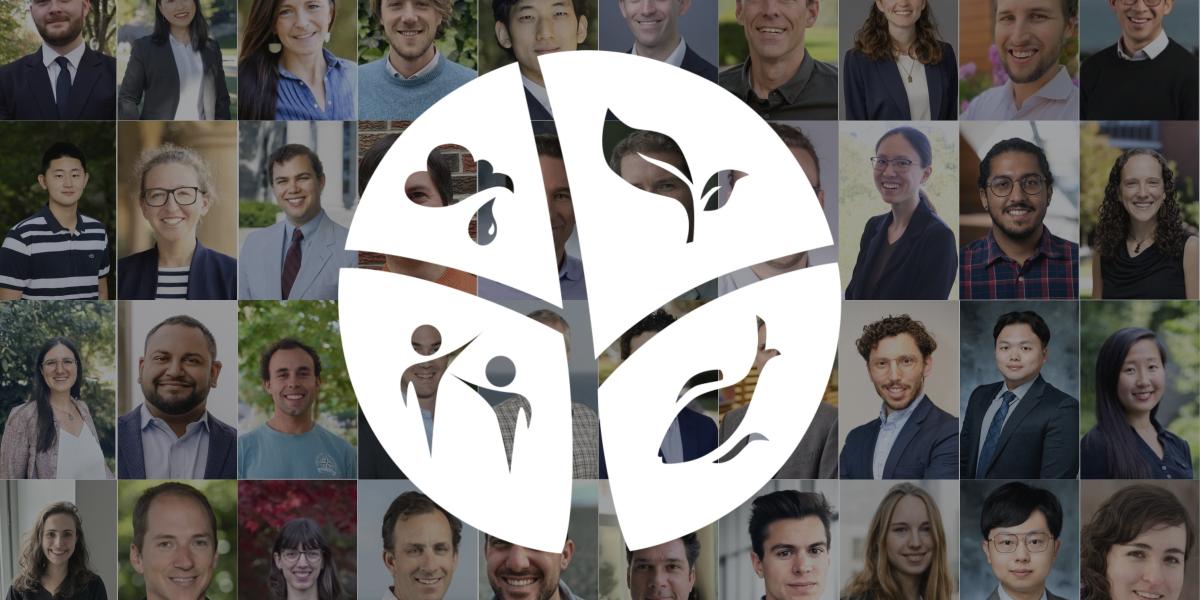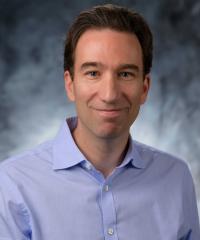
This October, emLab hosted the 22nd Occasional Workshop in Environmental and Resource Economics at UC Santa Barbara and welcomed more than 100 participants for a conference at the Loma Pelona Center on our beautiful campus.
Following the long-standing tradition established by founding figures Robert Deacon and Charlie Kolstad, this year’s workshop showcased new research addressing a wide range of questions in natural resource and environmental economics. The program featured eight full presentations, seven “rapid-fire” talks, and thirteen “egg-timer” presentations by PhD students and post-doctoral researchers, in addition to a keynote address by David Lobell from Stanford University and, for the first time, a pre-workshop masterclass on the economics of climate change adaptation led by Tamma Carleton. We also acknowledge the eight faculty members who presented insightful discussions of the full presentations, and everyone who participated in the lively discussions after the presentations and during the social events.
Keynote Speaker
David Lobell, an agricultural ecologist from Stanford University, delivered the keynote address “Agricultural Adaptation to Climate Change: Building Multiple Lines of Evidence.” David argued that when studying a hard problem like climate change adaptation, we need to approach it from many angles. He reviewed what we know about adaptation in agriculture from “digital twins” studies (simulations with models of farmer behavior based on first principles) and econometrics, as well as limitations of these approaches (e.g., econometric studies often do not identify specific margins of adaptation). A new line of evidence comes from natural experiments involving climate shocks, which allows us to observe adaptation directly. David shared examples including the wet spring in the US in 2019 and the Argentinian drought in 2022-23, in the latter case documenting how changes in crop rotations were used to increase soybean yields. Finally, he showed how tracking farmer practices can reveal adaptive behavior. In addition to a fascinating and thought-provoking talk, David delivered the most memorable line of the conference: “I know what Pigouvian taxes are; I just don’t care.”

David Lobell working on satellite mapping and yield prediction in a cornfield in Kenya. Photo Credit: Marshall Burke
Speaker Highlights
Shifrah Aron-Dine from UC Berkeley presented a paper on post-disaster decisions by households to better understand their decisions to rebuild or relocate. Shifrah used Hurricane Maria as a case study, which struck Puerto Rico in 2017, causing massive damage and displacement of residents. Survey and flight data revealed that 7% of the population migrated to the mainland U.S. Using these data to calibrate a dynamic equilibrium model, Shifrah finds large welfare losses among homeowners whose properties were damaged, as well as welfare losses for other residents due to higher prices and compromised infrastructure. The model further reveals that rebuilding subsidies are not cost effective, even though they help to reduce mortgage defaults and housing shortages. On the other hand, local infrastructure investment is a cost-effective policy.
Will Rafey from UCLA shared new results on water use in California, addressing the long-standing concern that water is misallocated given that water rights are based on a seniority system and that little trading occurs. Using highly granular data to model dynamic investments in agriculture, Will finds evidence of significant dispersion of marginal products of water within and across regions, documents a clear north-south difference in the value of water rights, and finds that higher valued water rights correlated with the seniority of rights. Will introduces a new method for valuing water rights that can help to estimate the efficiency gains of introducing more advanced water markets in California.
Kelsey Larson from Montana State University presented research on the environmental quality benefits provided by conservation easements on private lands. Studying Virginia’s Easement Tax Incentive Program, Kelly finds little difference in the environmental quality of easement lands compared to unconserved parcels. On the other hand, public conservation lands have higher quality. In addition, a 2002 reform to the program that increased tax incentives did not increase the marginal quality of parcels enrolled in the program.
Judson Boomhower from UC San Diego presented a new paper documenting how wildfires affect households economically. The paper uses detailed property-damage records from more than 100 wildfires combined with IRS tax filings data on income and finds that wildfire-exposed households are, on average, higher-income and more likely to be white. However, lower-income residents face a substantially higher chance of losing their home in a wildfire driven by disparities in mitigation and housing characteristics. The analysis shows that households whose homes are destroyed in wildfires experience income losses of about 10% and lasting for three years. Overall, the study reveals significant inequality in wildfire vulnerability and highlights the long-term economic toll of growing climate-driven disasters.
Eleanor Krause from the University of Kentucky presented a paper on the benefits of energy-based adaptation to extreme temperature in the U.S. Using a border-pair research design, the paper shows that higher electricity prices worsen heat-related mortality, while more generous Low-Income Home Energy Assistance Program (LIHEAP) subsidies reduce it by a similar magnitude. The paper highlights a core climate-policy tradeoff: decarbonization can make life-saving adaptation more costly, especially for low-income households, and targeted assistance programs can meaningfully offset this burden.
Ed Rubin, visiting from the University of Oregon, presented his paper examining how air quality regulations in a given location may worsen air quality in connected “downwind” locations. In particular, he showed that when federal regulations force power plants to cut emissions of fine-particulate (PM2.5) precursors, downwind counties constrained by the National Ambient Air Quality Standards respond by relaxing their own local pollution controls—a phenomenon known as “regulatory rebound.” These rebound effects may erode expected health gains from air quality regulation and highlight the importance of accounting for regulatory interactions when evaluating the benefits of climate and air-quality rules.
Matthew Kotchen from Yale University presented a new working paper studying how carbon taxes and green energy subsidies interact in a globally integrated economy—and why countries may rationally use both. The paper shows that unlike carbon taxes, which raise the world price of fossil fuels and cause “leakage” by shifting emissions abroad, green subsidies lower global fossil prices and induce a “reverse leakage” effect that cuts emissions both domestically and internationally. These leakage and reverse-leakage effects are amplified by fossil-fuel and green lobbying, respectively. Overall, this striking paper highlights how trade, leakage, subsidies, and political economy reshape optimal climate policy in a deeply interconnected world.
Frederik Noack, visiting from the University of British Columbia, showed new evidence that biodiversity—specifically migratory insect-eating birds—is a productive economic input for North American agriculture and forestry. Using hundreds of thousands of bird survey observations combined with detailed data on crop yields, pesticide use, and forest pest outbreaks, the paper exploits natural variation in South American winter habitat conditions to identify changes in birds’ return migration. Frederik showed that when fewer migratory birds return, farms experience lower yields and revenues, forests face higher pest outbreaks, and pest control costs rise. The study also finds that bird species are highly substitutable in agriculture but less so in forests, and demonstrates that biodiversity loss leads to measurable economic costs and that conservation in one region (South America) generates substantial production benefits in another (North America).

Keynote speaker David Lobell joins Heather Lahr, Olivier Deschenes, Andrew Plantinga (2025 event organizers), and Christopher Costello (emLab Research Director) for a quick photo between sessions.




